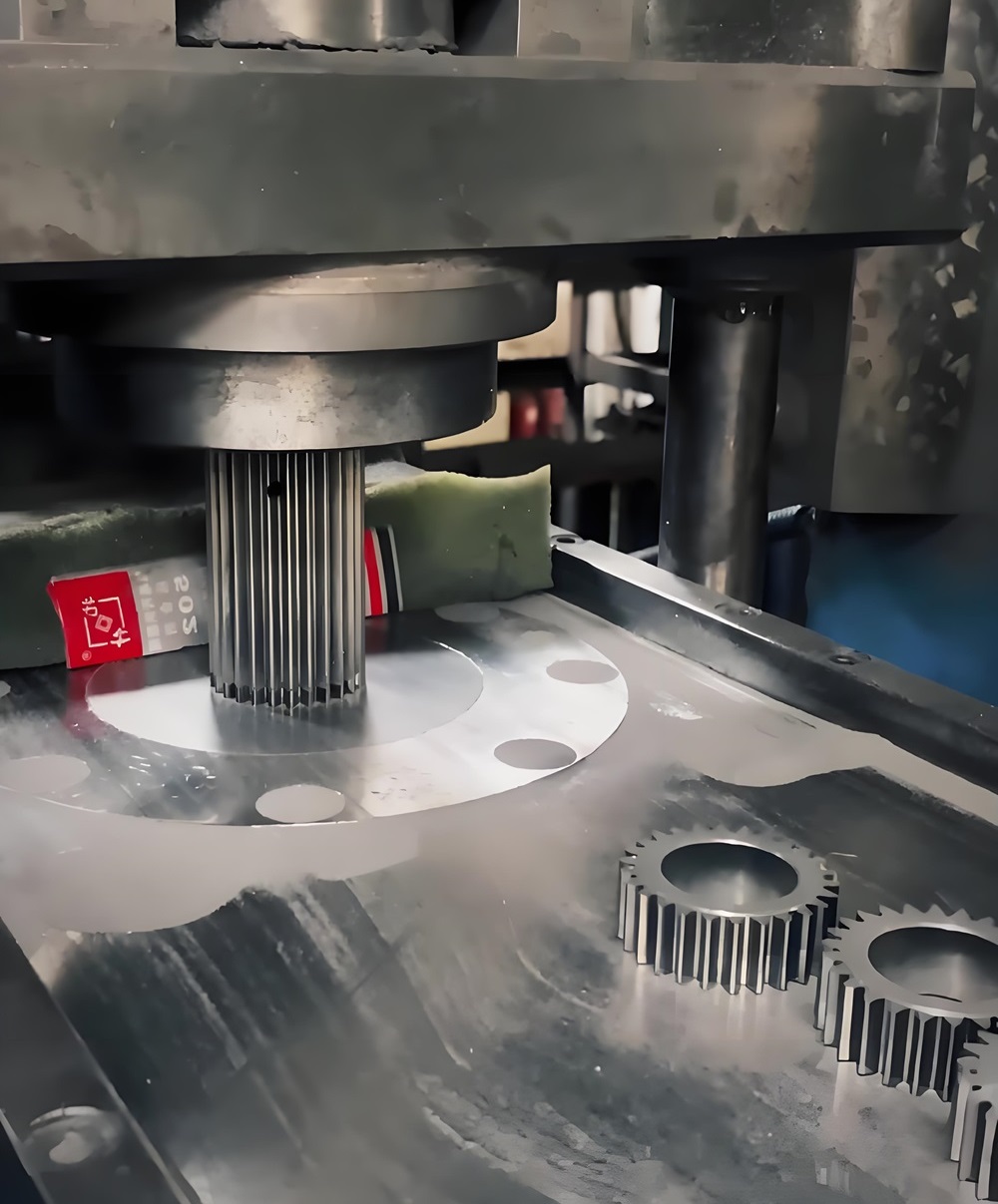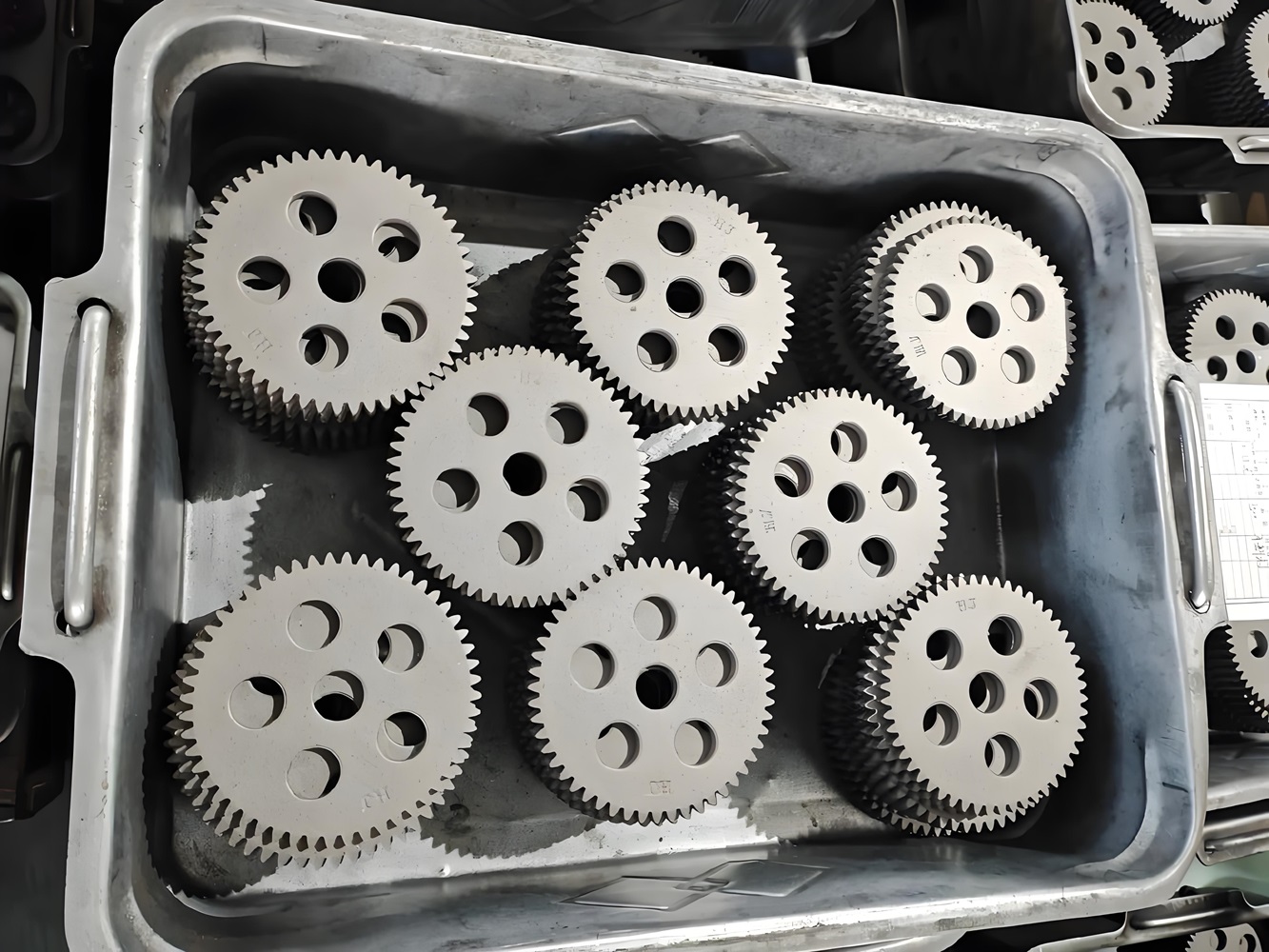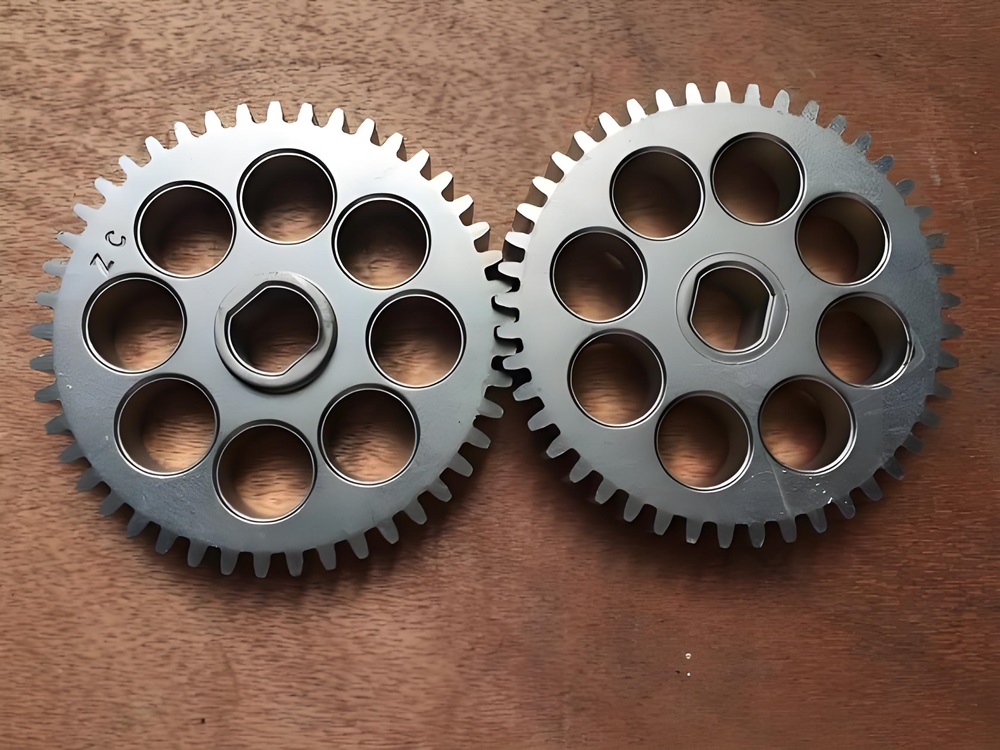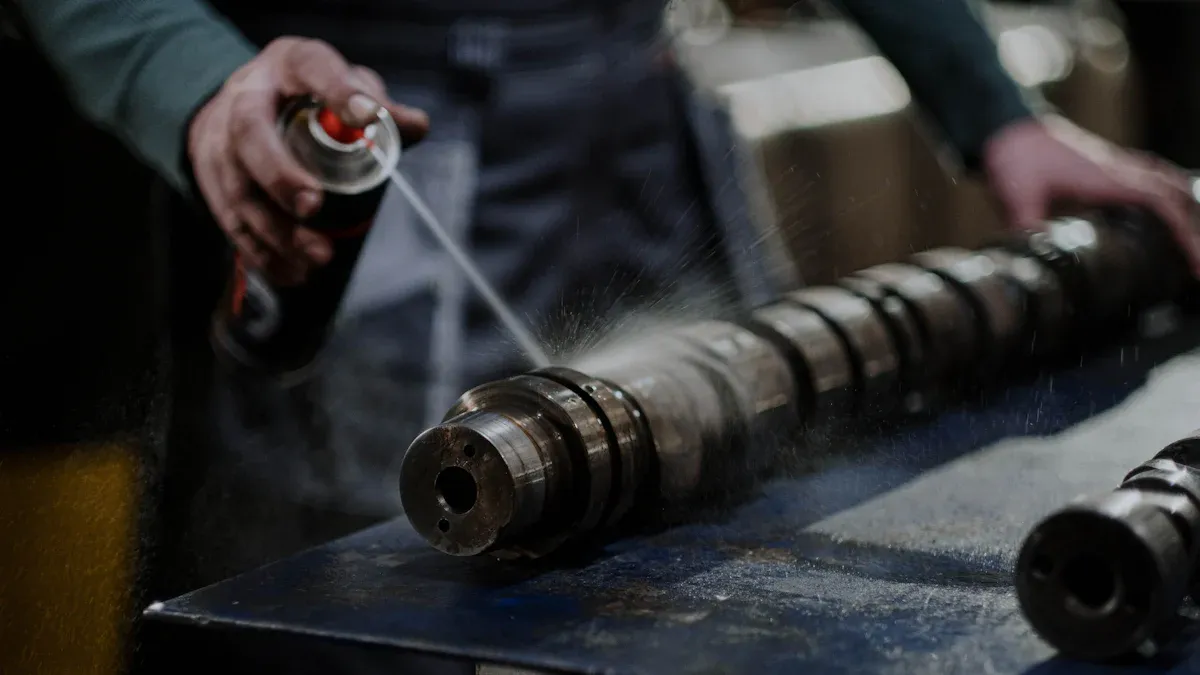
Impregnation in Powder Metallurgy involves filling the pores of sintered metal components to enhance their properties. This process improves strength, stiffness, and thermal conductivity, ensuring better performance in demanding applications. By reducing porosity, it increases durability, prevents corrosion, and enhances coating adhesion. These benefits make it essential for high-precision industries seeking cost-effective solutions.
Understanding Impregnation in Powder Metallurgy
What is Impregnation in Powder Metallurgy?
Impregnation in Powder Metallurgy refers to a specialized process where the pores of sintered metal components are filled to improve their properties. This technique enhances the performance and functionality of parts by reducing porosity and increasing strength. Depending on the application requirements, methods like oil impregnation or resin impregnation can achieve this.
The process typically operates at room temperature or slightly elevated temperatures, ensuring compatibility with various materials. Resin impregnation is particularly effective for components with a density range of 80% to 90%. Below is a table summarizing the key characteristics of this process:
| Characteristic | Description |
|---|---|
| Definition | Impregnation is a process used to fill the pores of sintered powder metallurgy parts to enhance their properties. |
| Methods | Common methods include oil impregnation and resin impregnation. |
| Density Range | Resin impregnation is ideal for parts with a density of 80% to 90%. |
| Temperature | Impregnation is usually carried out at room temperature or slightly elevated temperatures. |
| Advantages | Reduces porosity, increases strength, enhances durability, and provides protection against corrosion. |
| Vacuum Oil Impregnation Process | Involves cleaning, creating a vacuum, introducing oil, and curing to solidify the oil in the pores. |
Why is Impregnation Essential for Sintered Components?
Sintered components often contain inherent porosity due to the manufacturing process. This porosity can weaken the material and reduce its performance in critical applications. By using impregnation, you can address these challenges effectively. The process fills the pores, making the material stronger and more durable.
Impregnation in Powder Metallurgy also enhances the sealing properties of components. This is particularly important for parts used in industries like automotive and aerospace, where leak prevention is crucial. Additionally, it improves the machinability of sintered parts, allowing you to achieve precise dimensions and finishes. These benefits make impregnation an indispensable step in producing high-quality sintered components.
Types of Impregnation in Powder Metallurgy

Oil Impregnation
Oil impregnation is one of the most common methods used in powder metallurgy. It involves filling the pores of sintered components with lubricating oil, which provides several advantages. This method is particularly effective for self-lubricating bearings, ensuring smooth operation and reducing maintenance needs.
| Advantage | Description |
|---|---|
| Self-lubricating | Oil-impregnated bushings release lubricant during operation, ensuring continuous lubrication. |
| Extended product lifespan | Continuous lubrication reduces friction and wear, significantly extending the lifespan of components. |
| Corrosion protection | The oil forms a protective barrier, preventing moisture and corrosive elements from damaging the part. |
You can rely on oil impregnation to enhance the performance and durability of components in applications where lubrication is critical.
Vacuum Impregnation
Vacuum impregnation uses a pressurized vacuum to fill the pores of sintered parts with a sealant. This method is ideal for applications requiring leak prevention and enhanced sealing properties. The process involves several steps:
- Place the component in a vacuum chamber to remove air from the pores.
- Introduce a sealant to fill the voids and create a leak-proof structure.
- Recover excess sealant for reuse.
- Rinse the component to remove residual sealant.
- Cure the sealant to solidify and ensure durability.
This method is widely used in industries such as automotive, aerospace, and heavy machinery, where reliability and precision are paramount.
Resin and Polymer Impregnation
Resin and polymer impregnation involve filling the pores of sintered components with resin to improve strength, durability, and surface protection. This method is particularly effective for parts exposed to high temperatures or corrosive environments. Resin impregnation offers several benefits:
| Benefits of Resin Impregnation | Description |
|---|---|
| Enhanced durability | Reduces porosity and increases part strength. |
| Surface protection | Provides a hardened resin layer that resists wear and corrosion. |
| High-temperature resistance | Maintains stability up to 400℃, making it suitable for demanding applications. |
You can use this method to prepare components for plating or to enhance their performance in harsh conditions.
The Impregnation Process in Powder Metallurgy
Key Steps in the Impregnation Process
The impregnation process involves several precise steps to ensure optimal results for sintered components. Depending on the method used, the steps may vary slightly. Below is a table summarizing the key steps for different impregnation techniques:
| Method | Key Steps |
|---|---|
| Wet Vacuum | 1. Load parts into vacuum chamber with resin solution. 2. Remove air to form a vacuum. 3. Inject air to penetrate resin. 4. Spin parts and heat to harden. |
| Dry Vacuum | 1. Place parts in vacuum chamber. 2. Extract air from pores. 3. Introduce resin in vapor or powder form. 4. Allow resin to infiltrate. |
| Anaerobic Polyester Resin | 1. Submerge parts in resin. 2. Clean surface with detergent and water. 3. Place in catalyst tank for hardening. |
| Vacuum Oil | 1. Clean bushings. 2. Use vacuum pump to remove air. 3. Introduce oil into vacuum chamber. |
Each method ensures that the pores of the sintered components are filled effectively, enhancing their performance and durability.
Equipment Used for Impregnation
The equipment used in impregnation plays a critical role in achieving consistent and high-quality results. Here are some commonly used tools and their functions:
- Centrifugal Impregnation: Injects air to push resin into the pores, followed by spinning and heating to harden the material.
- Dry Vacuum Impregnation: Uses a vacuum chamber to remove air from the pores, allowing deep resin infiltration.
- Anaerobic Polyester Resin Impregnation: Submerges parts in resin, cleans them, and hardens them in a catalyst tank.
- Vacuum Oil Impregnation: Removes air using a vacuum pump and introduces oil under low pressure to fill the pores.
- Heating Oil Impregnation: Soaks parts in hot oil, allowing the oil to fill the pores as the air expands and cools.
These tools ensure that the impregnation process is efficient and tailored to the specific needs of the components.
Quality Control Measures in Impregnation
Quality control is essential to ensure the effectiveness of impregnation in powder metallurgy. You can implement the following measures to maintain high standards:
- Leak Testing: Check components for leaks to confirm proper sealing.
- Dimensional Inspection: Measure parts to ensure they meet the required specifications after impregnation.
- Material Analysis: Test the impregnated material for strength, durability, and resistance to wear or corrosion.
- Process Monitoring: Regularly monitor equipment and process parameters to maintain consistency.
By adhering to these measures, you can guarantee that the impregnated components meet industry standards and perform reliably in their applications.
Benefits of Impregnation in Powder Metallurgy

Enhanced Lubrication and Wear Resistance
Impregnation in Powder Metallurgy significantly enhances lubrication and wear resistance, particularly in sintered components like bearings. The oil impregnation process fills the porous structure of these parts, creating interconnecting capillary channels that allow lubricants to flow effectively. This ensures continuous lubrication during operation, even under high-stress conditions.
- Key Advantages:
- Self-lubricating: Oil-impregnated bushings release lubricant automatically, reducing the need for external lubrication.
- Extended lifespan: Continuous lubrication minimizes friction and wear, prolonging the component’s operational life.
- Corrosion protection: The oil forms a barrier against moisture and corrosive elements, safeguarding the part.
The porosity of sintered components retains lubricants, ensuring consistent lubrication of contact surfaces. This reduces wear and enhances the reliability of parts in demanding applications.
Improved Sealing and Leak Prevention
Impregnation addresses porosity issues in sintered components, which are a common cause of leaks. Vacuum impregnation effectively seals interconnected pores, creating a pressure-tight structure. This process is particularly beneficial for applications requiring leak-proof performance, such as in the automotive and aerospace industries.
- How It Works:
- Fills pores in metal parts, eliminating leak paths.
- Creates a pressure-tight seal that prevents fluid leakage.
- Enhances surface finish quality, improving overall part performance.
By sealing these leak paths, impregnation ensures that components meet stringent industry standards for reliability and durability.
Increased Strength, Durability, and Machinability
Impregnation strengthens sintered components by reducing porosity and reinforcing their structure. This process enhances the material’s ability to withstand mechanical stress and environmental factors. Additionally, it improves machinability, allowing you to achieve precise dimensions and finishes.
- Benefits:
- Increased strength: The filled pores create a denser, more robust structure.
- Enhanced durability: Components resist wear, corrosion, and thermal stress more effectively.
- Improved machinability: The smoother surface allows for easier and more accurate machining.
These improvements make impregnated components ideal for high-performance applications across various industries.
Applications of Impregnation in Powder Metallurgy

Automotive Industry Applications
You will find impregnation widely used in the automotive industry to enhance the performance of porous materials. Processes like vacuum pressure impregnation (MVPI) improve material strength, stiffness, and thermal properties. These enhancements are critical for components exposed to severe operating conditions. For example, oil-impregnated bushings in engines and transmissions ensure smooth operation by providing self-lubrication.
This process also increases the current-carrying capacity of electrical components, ensuring efficient conduction. By improving lubricity and heat management, impregnation extends the lifespan of automotive parts. These benefits make it an essential technique for manufacturing durable and reliable components in modern vehicles.
Aerospace and Defense Applications
In aerospace and defense, you rely on impregnation to meet stringent performance and safety standards. The process strengthens sintered components, making them capable of withstanding extreme temperatures and mechanical stress. Vacuum impregnation is particularly effective for sealing porous parts, ensuring leak-proof performance in critical systems like fuel tanks and hydraulic systems.
Impregnation also enhances the corrosion resistance of components exposed to harsh environments. This makes it ideal for aerospace applications where reliability is non-negotiable. By improving the structural integrity and durability of parts, impregnation supports the development of advanced technologies in these industries.
Medical and Electronics Industry Uses
In the medical field, impregnation plays a vital role in enhancing the performance and durability of devices. Vacuum pressure impregnation ensures that medical components meet high standards of reliability and safety. For instance, it improves the strength and sealing properties of surgical instruments and implants.
In electronics, you can use impregnation to enhance the reliability of components like circuit boards and connectors. The process fills microscopic voids, preventing moisture ingress and improving thermal conductivity. These improvements ensure that electronic devices operate efficiently, even in demanding conditions.
Impregnation in powder metallurgy transforms sintered components by enhancing their strength, durability, and functionality. You benefit from self-lubricating parts that reduce maintenance costs, extended product lifespans due to minimized wear, and corrosion protection through oil-filled pores. Resin impregnation further boosts durability and withstands high temperatures up to 400℃. These advantages make it indispensable across industries like automotive, aerospace, and electronics.
FAQ
What industries benefit the most from impregnation in powder metallurgy?
Industries like automotive, aerospace, electronics, and medical rely heavily on impregnation. It enhances durability, sealing, and performance of sintered components in demanding applications.
Can impregnation improve the lifespan of sintered components?
Yes, impregnation significantly extends component lifespan. It reduces wear, enhances lubrication, and prevents corrosion, ensuring reliable performance under high-stress conditions.
Is vacuum impregnation suitable for all sintered parts?
Vacuum impregnation works best for components requiring leak prevention and sealing. It is ideal for applications in automotive, aerospace, and heavy machinery industries.
